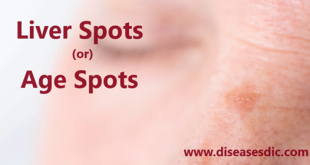Definition
Erysipelas is an infection of the upper layers of the skin (superficial). The most common cause is group A streptococcal bacteria, especially Streptococcus pyogenes. Erysipelas results in a fiery red rash with raised edges that can easily be distinguished from the skin around it. The affected skin may be warm to the touch. At one time, erysipelas was thought to affect mostly the face, but recent studies suggest that the distribution of the inflammation is changing since at the present time the legs are involved in almost 80% of cases. The rash may also appear on the arms or trunk.
Erysipelas begins with minor trauma, such as a bruise, burn, wound, or incision. When the rash appears on the trunk, arms, or legs, it is usually at the site of a surgical incision or a wound.
Epidemiology
Erysipelothrix rhusiopathiae is thought to be spread among swine by carriers in the herd. Many healthy swine are carriers of pathogenic and/or nonpathogenic Erysipelothrix and disseminate the organism in their feces and oronasal secretions. Pigs affected with erysipelas also shed large numbers that contaminate feed, water, soil and bedding. Contaminated soil probably does not remain infective for more than 35 days. The resistant organisms can flow in surface water to adjacent premises.
A wide range of wild mammals, poultry, wild birds and pets can disseminate the bacteria. There is empirical evidence that biting flies and ticks can sometimes transmit E. rhusiopathiae between swine. The many carriers of E. rhusiopathiae make eradication of SE unlikely.
Risk factors
Erysipelas most often affects elderly people and infants who have weaker immune systems and are less able to fight local infections. With that said, anyone can be affected, especially those with certain risk factors:
- Broken skin, including cuts, abrasions, insects bites, ulcers, animal bites, pinpricks, and burns
- Immune deficiency
- Eczema
- Psoriasis
- Athlete’s foot
- Venous insufficiency
- Diabetes
- Being overweight
- Lymphedema
- Strep throat
- Prior history of erysipelas
Causes of Erysipelas
The condition occurs when the streptococcus bacteria infects the skin. The bacteria can live on your skin without causing a problem. However, if the skin is damaged or broken then the bacteria can infect the tissues underneath the surface (subcutaneous tissue).
You skin can be damaged or broken by:
- Insect bites
- Skin ulcers
- Open wounds, such as after an operation
- Psoriasis
- Eczema
- Another condition which damages the skin
You are also more likely to develop the condition if you have:
- Swollen legs, which could be because of another condition, or if you’re overweight
- Have had cellulitis before
- High blood sugar levels because of poorly managed diabetes
- Are pregnant
- Use intravenous drugs
- Are elderly or very young
- Have a weakened immune system
Erysipelas symptoms
The symptoms of erysipelas typically include:
- Fever
- Generally it feels bad
- A red, swollen, painful area of the skin with a raised border
- Blisters in the affected area
- Swollen glands
- When the erysipelas affects the face, the swollen area usually includes the nose and both cheeks
Erysipelas in face
Complications of Erysipelas
Erysipelas can cause the following complications if the infection is severe or left untreated.
- Lymphedema: Baterial infection may destroy some parts of the lymphatic system. This causes lymph to build up in the body lymphedema is a major risk factor for the recurrence of erysipelas.
- There may be localised collections of pus filled cavities on the skin (abscess)
- Bacteremia: The bacteria may travel to the blood and affect the joints, heart valves and bones.
- Septicemia: Blood poisoning can occure due to bacterial infections.
- Meningitis: Facial erysipelas may cause meningitis
- Recurrent erysipelas may occur at the same site of initial infection
- Death of affected tissue resulting in gangrene
- Kidney damage may occur
Although rare, if these complications occur, it is advisable that they are treated immediately to avoid further damage.
Abscess and meningitis are complications more likely to develop where the bacterial infections spreads to the deeper layers of the sking (cellulitis).
Diagnosis and test
Doctors can usually tell whether an infection is erysipelas or cellulitis based on the typical symptoms and the appearance of the skin. Your medical history or recent injuries often help to diagnose the problem too.
Further tests aren’t usually needed. It can sometimes help to test fluid from the wound for germs. This is done when doctors think there may be a specific germ causing the infection, for instance because someone’s skin became infected after they were bitten by an animal.
Tests may reveal:
- Raised white cell count
- Raised C-reactive protein (CRP)
- Positive blood culture identifying the organism
MRI and CT are undertaken in case of deep infection.
Treatment and medications
Treatment for erysipelas often includes home treatment. In severe cases, a patient with erysipelas could be hospitalized. To begin home treatment, raise the affected area to reduce any swelling. Elevation may need to take place for several days to see an improvement in swelling. Do note that it is important to stand and walk from time to time to get blood flowing and to make sure to drink plenty of fluids.
Antibiotics are usually prescribed for erysipelas. For a less severe case, antibiotics will be prescribed for up to two weeks. In severe cases, the patient may need to go into the hospital for intravenous treatments. For those with repeat episodes of erysipelas, long term antibiotics could be prescribed. Painkillers will be given for severe pain and discomfort and to treat any fever. If athletes foot is the cause of erysipelas, anti-fungal medication may be prescribed.
Medications
- Intravenous antibiotics effective against group A beta-hemolytic streptococci and staphylococci should be considered, but outpatient treatment with oral antibiotics have demonstrated equal efficacy
- Oral regimens include a 7-day course with penicillin VK, 250 mg, dicloxacillin, 250 mg, or a first-generation cephalosporin (250 mg) four times daily orally
- Alternatives in penicillin-allergic patients are clindamycin (250 mg twice daily orally for 7–14 days) or erythromycin (250 mg four times daily orally for 7–14 days), the latter only if the infection is known to be due to streptococci
It is also recommended to use medications only after doctor’s consultation. In serious cases, antibiotics are administered through the vein. If the disease causes deterioration of healthy tissues in the affected part, then surgery is recommended to treat it.
Surgery
Surgery is also another treatment that is used for erysipelas. This is reserved for severe cases in which tissue that were once healthy has died. The dead tissue could need to be cut away.
Erysipelas prevention
- Good skin hygiene
- It is recommended that predisposing medical conditions, such as tinea pedis and stasis dermatitis, be appropriately managed first.
- Men who shave within 5 days of facial erysipelas are more likely to have a recurrence.
- With recurrences, search for other possible sources of streptococcal infection (e.g., tonsils, sinuses).
- Compression stockings should be encouraged for patients with lower extremity edema.
- Consider suppressive prophylactic antibiotic therapy, such as penicillin, in patients with >2 episodes in a 12-month period.
 Diseases Treatments Dictionary This is complete solution to read all diseases treatments Which covers Prevention, Causes, Symptoms, Medical Terms, Drugs, Prescription, Natural Remedies with cures and Treatments. Most of the common diseases were listed in names, split with categories.
Diseases Treatments Dictionary This is complete solution to read all diseases treatments Which covers Prevention, Causes, Symptoms, Medical Terms, Drugs, Prescription, Natural Remedies with cures and Treatments. Most of the common diseases were listed in names, split with categories.







